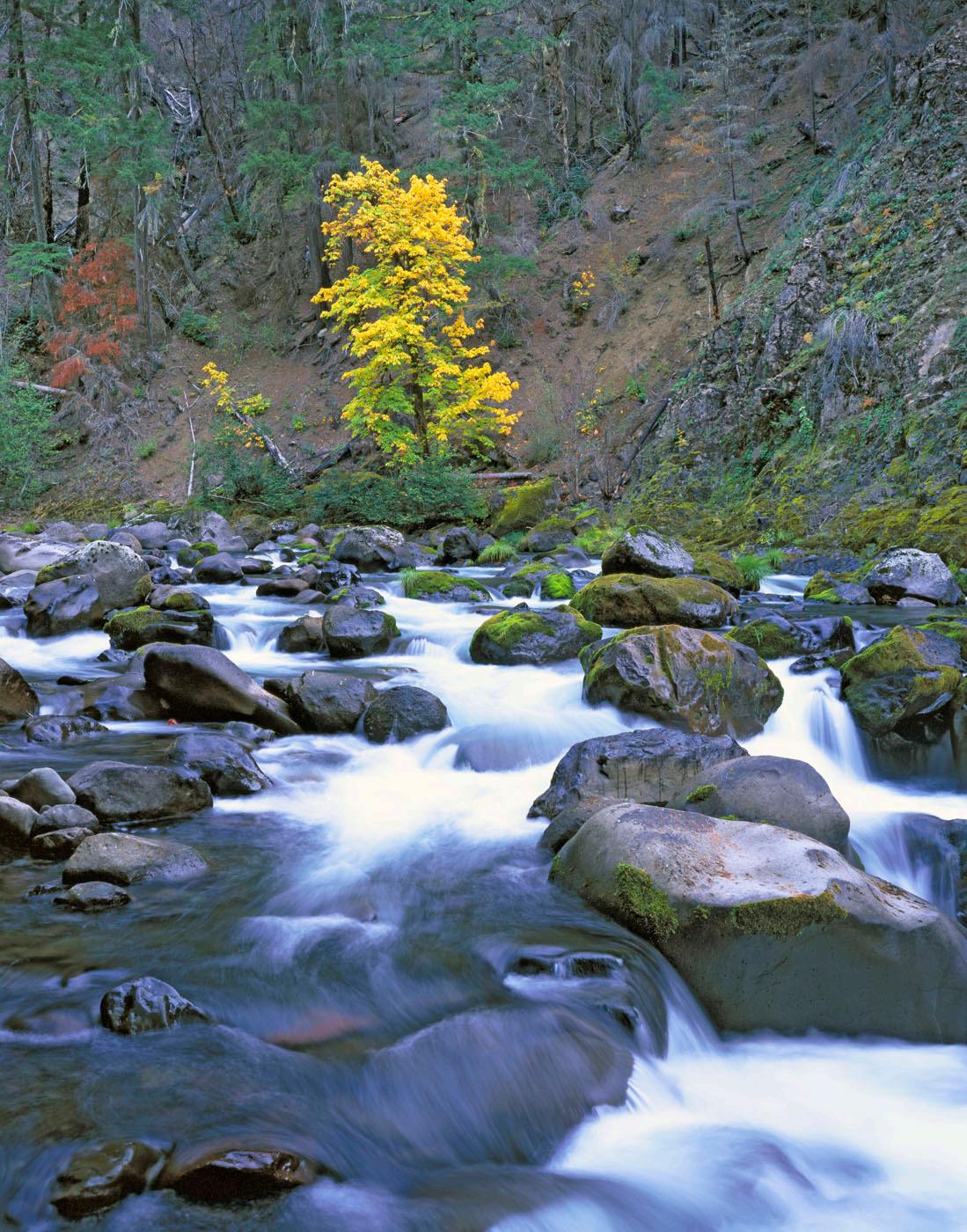
3 minute read
Autumn in the Cascades Buddy Mays
Autumn in the Cascades
By Buddy Mays
Advertisement
Oregon is not what most people would describe as a “leaf peeper” state, certainly not like Vermont or Pennsylvania, North Carolinaor Colorado, whose annual autumn color displays attract visitors from all over the world. But Oregon’s spectacular Cascade Range, a 100-mile wide, 295-mile-long chain of dormant volcanic peaks, and craggy, heavily timbered mountains running north to south from border to border, does have its autumnal moments.
From early September when the uncountable stands of vine maple and sword ferns begin their annual transformation, until mid-November when the last leaves of aspen, willow, and big-tooth maple finally decide that winter has arrived, the Cascades are checkerboarded with bands of brilliant color.
Bend, Oregon based photographer Buddy Mays, who has been photographing the Cascade color change for more than 20 years, says fall is the most beautiful time of the year to be in the mountains.
“The tourists have all gone home,” he says, “the mosquitoes are in bug heaven, the dust on the hiking trails has settled, and most of the wildland fires are finally out. When the maple and aspen trees begin to change color and the ferns turn gold and the fall crop of mushrooms startsto fruit, walking in a Cascade forest is akin to “strolling through a fairyland glade.”
What followsare some of Buddy’s favorite fall photographs. Nodoubt, he is wandering in some elfin Oregon forest at this very moment, foraging for mushrooms, admiring the scenery, and taking more pictures.
The canopy of a bigtooth maple, clinging to a rocky bank along the WillametteRiver near Oakridge, Oregon, turns bright yellow in mid-October. The bigleaf is native to Oregon and the Pacific Northwest and grows abundantly throughout the Cascade Range. It is America’s tallest maple tree, reaching heights of 100 feet, and its wood was used by early northwest Indian tribes for canoe paddles.

An ancient willow tree, leaves changing from green to gold in mid-September, frames the towering Three Sisters peaks:Faith, Hope, and Charity, near Sisters, Oregon. All dormant volcanoes risingover 10,000 feet, theyare sporting the season’s first snowfall.
Early on a warm September morning, mist rises from Clear Lake at the head of Oregon’s famous McKenzie River. Especially in autumn when lakeshore vine maple and willow scrub begin their annual color change, the lake is a popular withkayakers and canoeists.
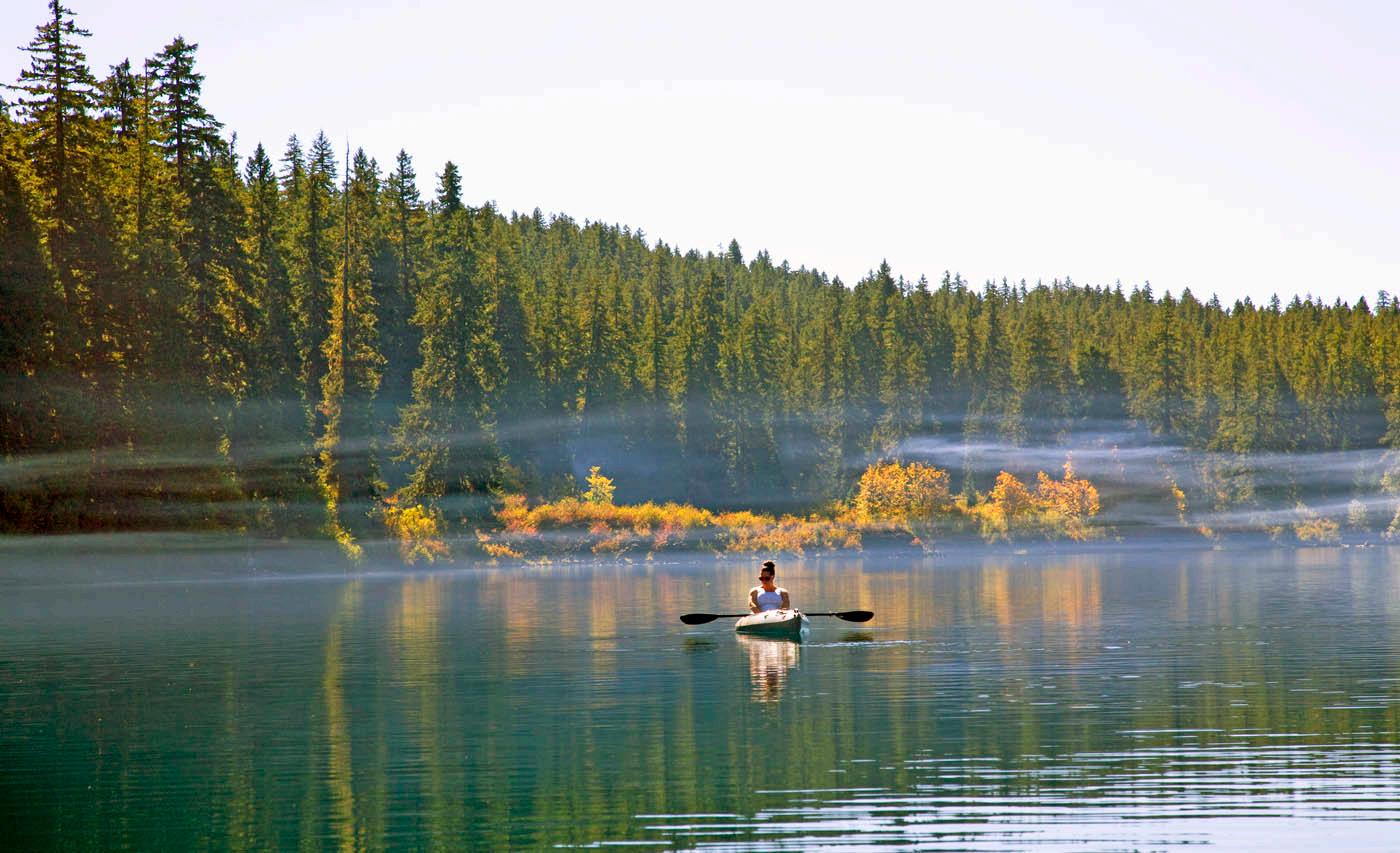
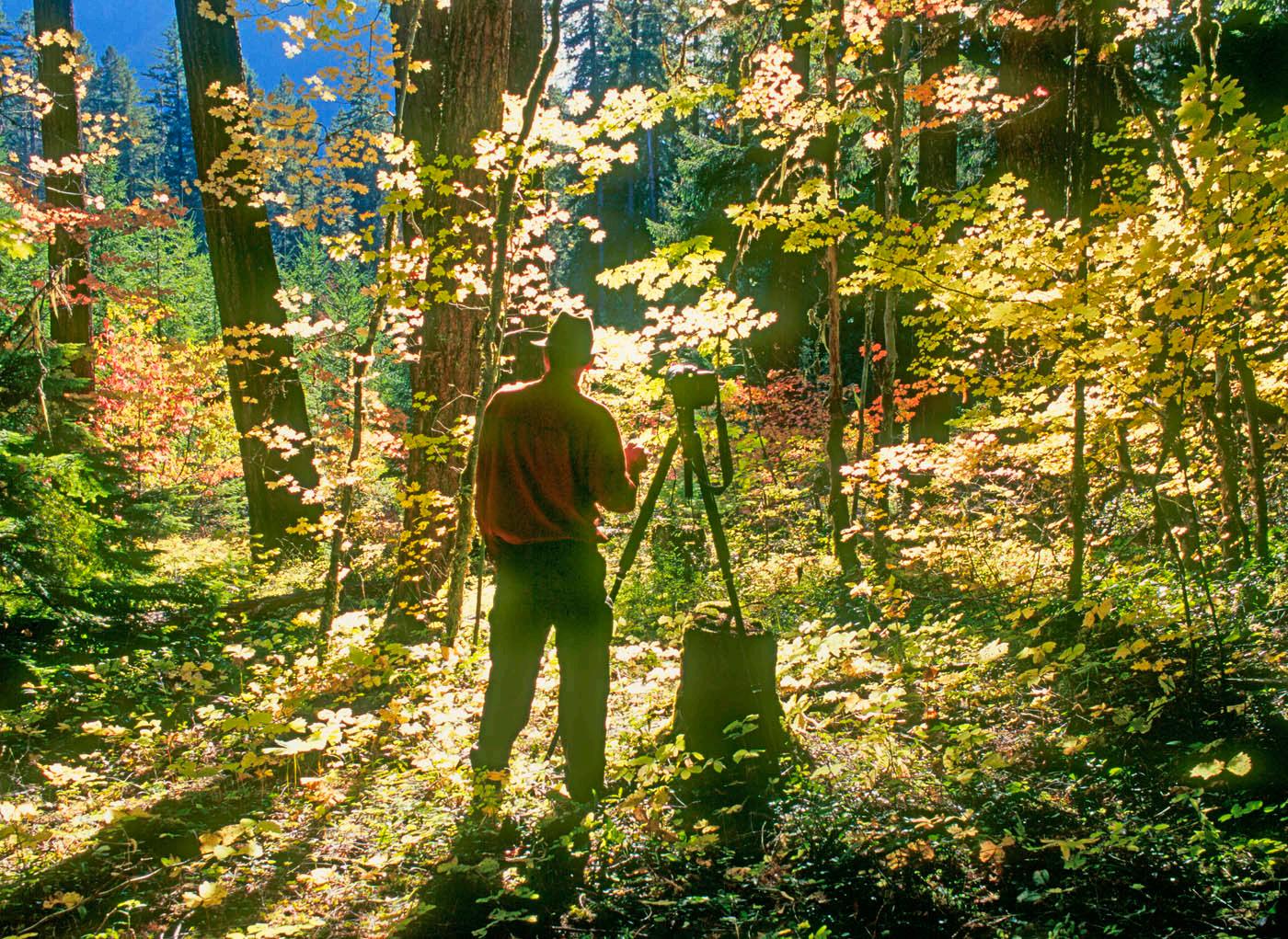
A landscape photographer awaitsthe perfect light along the Aufderheide National Scenic Byway, running along the spine of the Cascades. A large, bushy shrub, vine maple leaves turn blinding yellow, red, or both, in the fall.
On the Upper Deschutes River, a plein air painter captures the golden color of aspens and willows growing in profusion along the river’s banks. This stretch of river near Dillon Falls known as the Deschutes PaddleTrail, is one of the main leaf-peeping areas in the state from mid-October to early November.
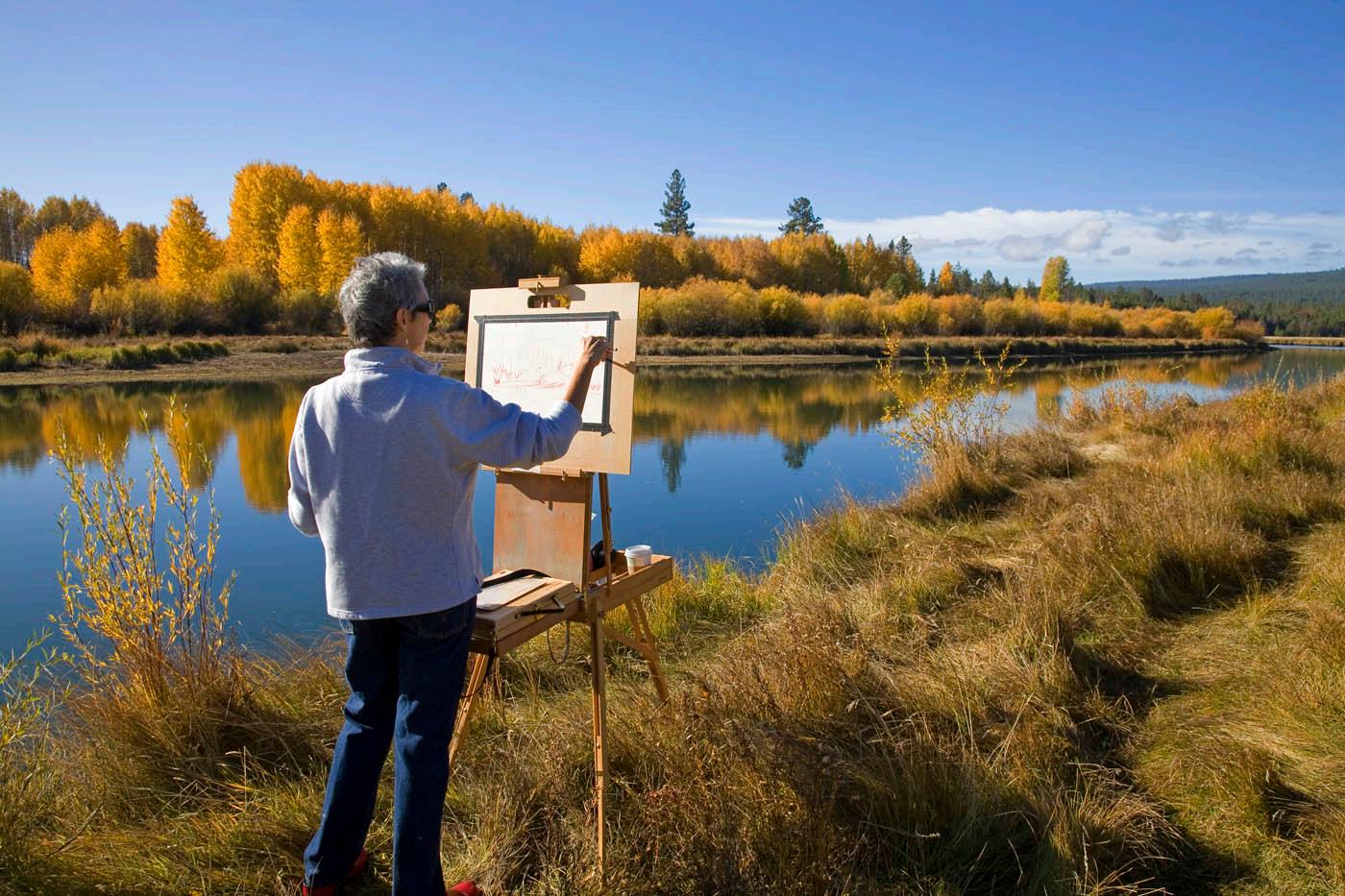
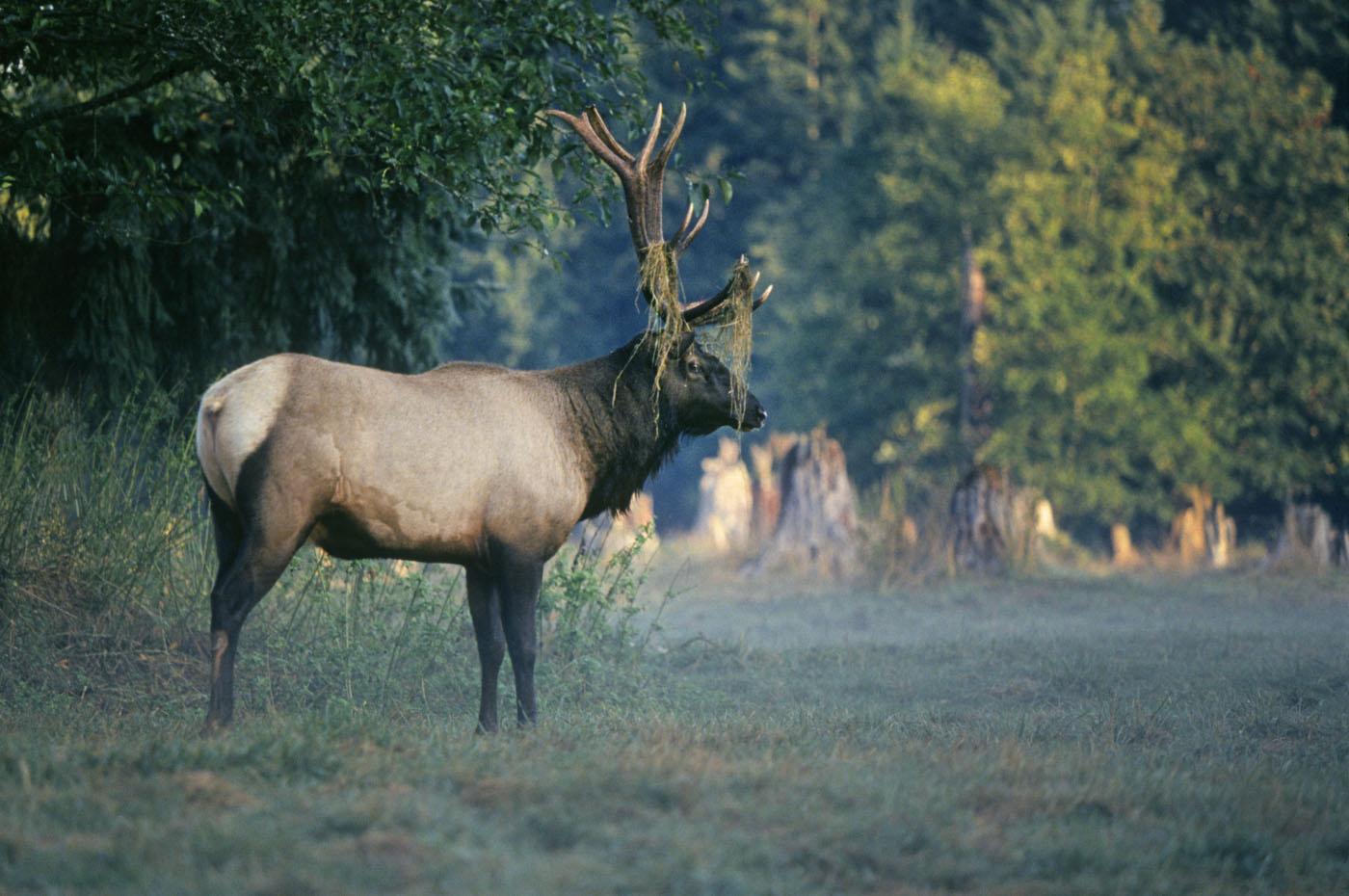
Continually scraping the velvet from his massive antlers on tree bark or brush, this adult bull elk readies for autumn rutting season in the northern Oregon Cascades near Mount Hood. He could have up to 40 females in his breeding harem by mid-November.
More a shrub than a tree, vine maple bushes can sometimes reach 20 feet in height. It is earliest of the Oregon autumn color changers, often beginning to turn either red, gold or sometimes both, in early September. This one is growing along Marion Creek near Detroit, Oregon in the western Cascades.
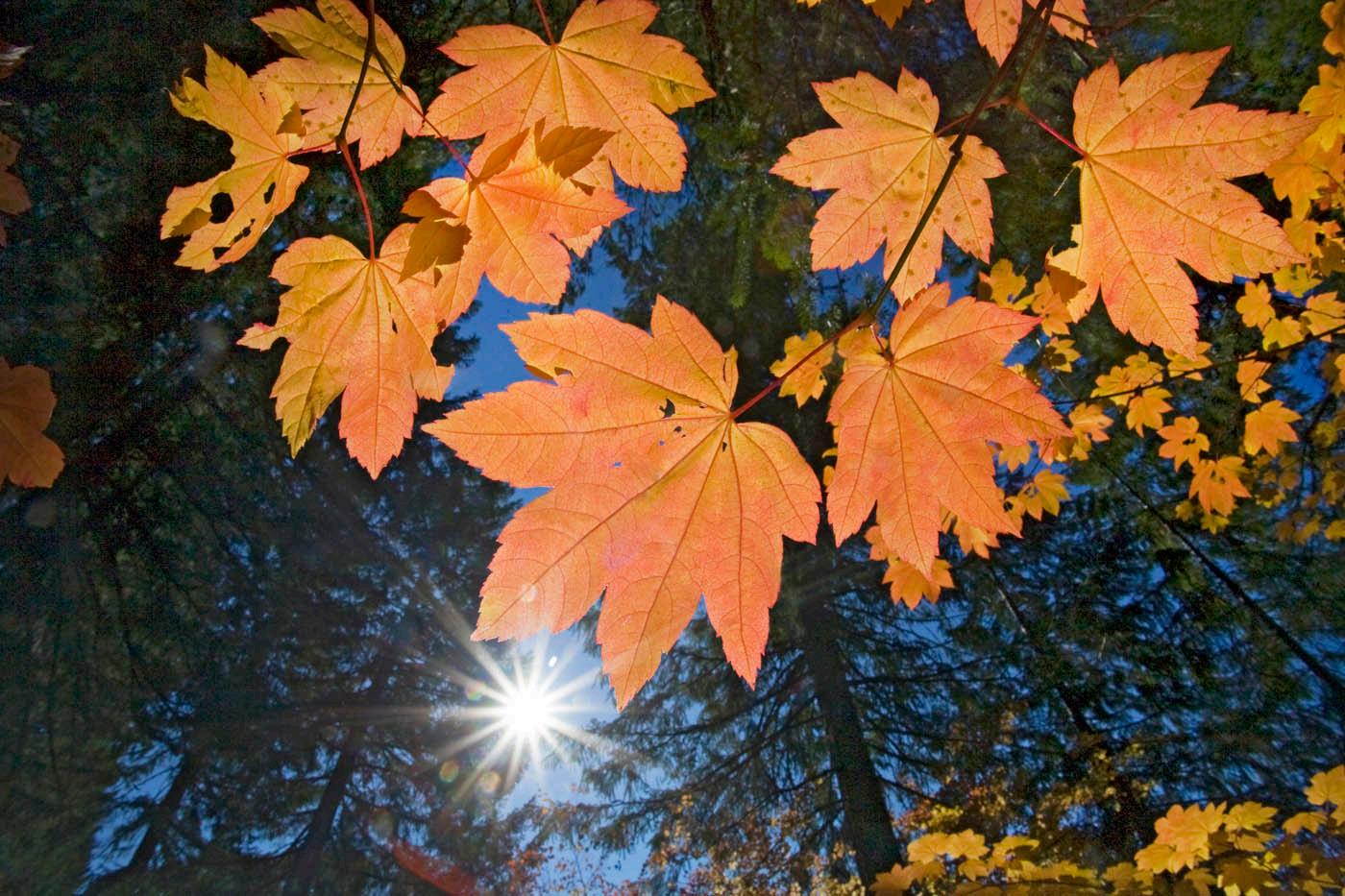

Akayaker paddles through the reflection of a riverside aspen forest as she navigates the quiet water above Dillon Falls on the upper Deschutes River. Hundreds of kayakers and canoeists float this area each day during the autumn color change.
A crown of fallen maple leaves swathes this mossy boulder at the edge of Lake Creek in the central Oregon Cascades near the town of Sisters. Vine maple is so abundant here that by the end of the fall season, the stream will be completely blanketed with leaves.











